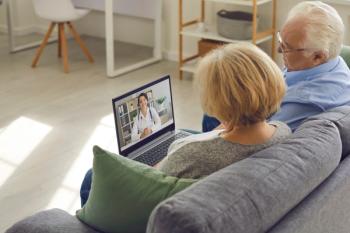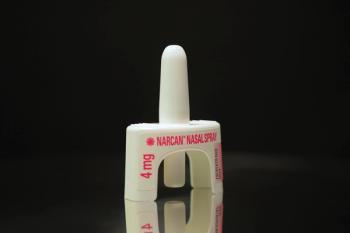
- Drug Topics September 2019
- Volume 163
- Issue 9
The Growing Problem of Pharmacy Deserts
An estimated 100 million Americans lack good access to pharmacies.
Pharmacy deserts, areas with low access to prescription medications, are a challenge. There could be nearly 100 million Americans without good access to pharmacies, but pharmacists are not rushing to fill the gap.
A few independent pharmacists are expanding their existing community practices with telepharmacies, either independently or in cooperation with medical clinics or retailers such as grocery and hardware stores, Federally Qualified Health Centers, hospitals, and other provider groups. That leaves pharmacy deserts as a tremendous opportunity.
“There are a number of options, all of them lesser than community pharmacy,” says Anthony Ciaccia, director of government and public affairs for the Ohio Pharmacists Association. Ohio is seeing a surge in pharmacy deserts as unprofitable rural pharmacies close.
Read More:
The National Association of Chain Drug Stores notes that 92% of Americans live within five miles of a community pharmacy, but five miles can be an impassable barrier if transportation is difficult. Patients who could walk to a pharmacy now have to drive-if they can.
“A lot of people go to mail order because it’s the best option when your nearest pharmacy is now five, 10, 20 miles away,” Ciaccia says. “Amazon, if they were to enter the prescription market, would likely convert a lot of people because they do convenience better.”
Physicians, nurse practitioners, and other prescribers are already moving in.
“They don’t want to dispense, it isn’t their expertise or their business,” says
The Underserved
Nearly 70% of Americans take at least one Rx drug, a number that is likely to increase as the U.S. population ages. And older patients are among the most likely to have pharmacy access problems
Dr. Pednekar, PhD, and other researchers at the University of the Science found that 39% of Pennsylvania census tracts are pharmacy deserts for older adults enrolled in state pharmaceutical assistance programs. Nationwide, at least 2.4 million rural residents are currently without adequate pharmacy access. And that is just the rural residents who are easy to count.
Trending:
“That number only counts people who live in towns with a population between 500 and 5,000 and do not have a community pharmacy within 10 miles,” Chesler says. “We don’t know how many rural residents live in areas with fewer than 500 and more than 5,000 who don’t have a pharmacy within 10 miles. And we have no idea of how many people in urban areas don’t have good pharmacy access.”
In 2012, about a million residents of Chicago alone lived more than a mile from the nearest pharmacy. That was about 37% of the city’s 2.7 million residents.
Continue reading on page 2...
“A mile may not seem like much, but if you don’t have a car and have problems walking, bus connections are bad, the weather is inclement, the neighborhood is dangerous, you have a child who needed that antibiotic yesterday for a raging infection, a mile can be impossible,” says Qato, assistant professor of pharmacy and public health at the University of Illinois at Chicago.
“Chicago’s pharmacy desert population is undoubtedly higher today following years of pharmacy closures by chain and independent operators,” she says. Researchers have identified similar pharmacy deserts in Los Angeles, Philadelphia, and other urban areas from coast to coast.
If Chicago’s pharmacy desert population is representative of other urban areas, more than 99 million of the country’s 268 million urban residents may lack adequate pharmacy access. Add the 2.4-plus million rural residents in pharmacy deserts and more than 100 million Americans have problems getting to a pharmacy.
Read More:
Qato coined the term “pharmacy desert” in 2014, building on the U.S. Department of Agriculture concept of food deserts-areas without adequate access to food markets. She stumbled into the realities of pharmacy access while working for two major pharmacy chains in Chicago.
As a floater, Qato quickly recognized that some neighborhoods had fewer pharmacies. If a prescribed drug was out of stock, she could easily transfer prescriptions to another store. But going to another pharmacy wasn’t always practical, even if it was only a mile or two away.
“There were neighborhoods where patients told me that just wouldn’t work,” she says. “They’d tell me they would have to take two more buses to get to that other pharmacy and more transfers to get home again. When I moved to academia, it was natural to look at why some neighborhoods had good pharmacy access and others didn’t.”
There are multiple factors driving disparities in pharmacy access, Qato says. Poor neighborhoods have fewer pharmacies than better off neighborhoods. Minority neighborhoods have fewer pharmacies than white neighborhoods with similar income levels. The key factor seems to be insurance coverage and the resulting pharmacy reimbursement.
“At least in Chicago, neighborhoods where residents have more Medicaid and Medicare coverage or are uninsured are much less likely to have adequate pharmacy access,” she says. “It’s a business problem specific to pharmacy. Those pharmacy desert neighborhoods have a thriving consumer business scene. Pharmacies can’t make a sufficient profit on Medicaid and Medicare to keep the doors open. Public policy needs to focus on pharmacy access, not just on pharmacy prices.”
Creating Pharmacy Deserts
Difficult access to healthcare services is not new in rural areas, (sparse rural populations don’t easily support healthcare providers any more than they support multiple retail businesses); however, pharmacy deserts are relatively new, spawned by recent pharmacy closures.
The Rural Policy Research Institute at the University of Iowa College of Public Health found that 1,231 independently owned rural pharmacies closed between 2002 and 2018, 16.1% of the total rural store count. The most dramatic decline occurred between 2007 and 2009, but closures continue.
Continue reading on page 3...
Ohio lost 20 largely rural pharmacies in early 2019. The Ritzman chain, a regional staple for decades, sold to CVS, which closed 16 stores. Instant pharmacy deserts, Ciaccia says.
The problem is reimbursement, particularly Medicaid and, to a lesser extent, Medicare Part D reimbursement, he says. Ohio has increased Medicaid spending by 20% in recent years, but the additional dollars have largely disappeared at the PBM level and never reached beneficiaries or pharmacies.
“CVS Caremark is noteworthy because it has a very obviously competing retail arm that benefits every time a competing pharmacy closes,” Ciaccia says. “But I can’t name a PBM that doesn’t have its own mail order or specialty pharmacy that profits from reduced retail competition. Community pharmacy closures are a benefit to the companies that price them out of the market by cutting reimbursement.”
Trending:
Ohio’s state Auditor found that PBMs had extracted $244 million from the Ohio managed care Medicaid program using spread pricing, Ciaccia notes. After the then-Auditor Steve Yost was elected Attorney General in 2018, the state sued OptumRx for overcharges to the workers compensation program. Yost calls the suit the first raindrops in a storm coming to PBMs in Ohio. Similar reimbursement problems help create and expand urban pharmacy deserts. Pharmacies with a high proportion of patients on public insurance can’t afford to remain in business. And as independent owners move into retirement age, it is increasingly difficult to find buyers for low-profit stores.
At the same time,
“Good business moves for the chains,” Qato says, “and bad for patients and their health outcomes.”
Filling the Gaps
Pharmacy deserts don’t have to be forever. The latest
“Satisfaction is highest when you talk with a pharmacist or a technician in person versus over the phone or channels such as email, or chat,” says J.D. Power analyst
Read More:
But those high satisfaction scores only apply to customers who can actually get to a pharmacy. That’s an invitation to expand into pharmacy deserts.
One possibility is new financial incentives for pharmacies in underserved areas. Federally Qualified Health Centers (FQHC) subsidize medical services, but most FQHCs are without a pharmacy. Qato recommends adding pharmacy services to the FQHC mandate.
The NCPA is pushing improved pharmacy access at both the state and federal levels. States from Oregon and California to Arkansas, Louisiana, and Virginia are requiring better pharmacy access, improved dispensing fees, stronger PBM oversight, and other patient- and pharmacist-positive changes in their Medicaid programs, says
Continue reading on page 4...
“Reimbursement is the main issue in pharmacy closures that contribute to pharmacy deserts,” Hauser says. “States are making it more obvious that they want to help pharmacies succeed and continue to stay open in these underserved areas.”
“We are seeing a major shift in states adapting regulations to work with telepharmacy,” says
Norman Schlecht, PharmD, opened one of the nation’s first community-based telepharmacies in 2001 in Gwinner, ND, a town of about 500. He turned a pharmacy desert into a profitable pharmacy.
Read More:
“They had a medical clinic, but no pharmacy,” Schlecht says. “Telepharmacy was a big improvement over having to drive 20 to 25 miles each way to get to a pharmacy.”
What began as a rural solution works just as well in urban pharmacy deserts. Tushar Mehta, RPh, opened the Broadway Medical Clinic Pharmacy in suburban Chicago in 2016. His telepharmacy is in a medical clinic in a blue-collar neighborhood with large Medicare/Medicaid populations and no brick-and-mortar pharmacy.
Mehta already owned two brick-and-mortar pharmacies a few miles away.
“Most of our telepharmacy patients are walk-ins, without working cars,” he says. “Too many times they never filled prescriptions because the nearest pharmacy was a mile or two away from the doctor. Patients got frustrated and never filled their scripts. Putting a pharmacy inside the clinic made those access issues go away.”
Low reimbursement from public insurance programs made a traditional pharmacy financially impossible, he adds. At 400 scripts per week, the telepharmacy turns a small profit.
“We have Medicare, Medicaid, a few private insurance patients. If I put everything together, I can afford to stay open because I don’t have a dedicated pharmacist salary. If this was a traditional pharmacy, it would be a money loser,” Mehta said.
Trending:
Dale Colee, RPh, took a slightly different approach in Decatur, IL. He partnered with a FHQC to open Colee’s Community inside Crossing Healthcare. He also owns two brick-and-mortar pharmacies in Decatur.
“Reimbursement rates are low in public aid managed care programs in Illinois, like they are in every state,” Colee says. “The only economically feasible route was to open a telepharmacy. When patients walk in, they can see a physician or nurse practitioner and get their script filled without ever leaving the building. And because we are part of a 340B program, we get a dispensing fee on brand name products that actually covers our costs. And we don’t lose nearly as much on generics.
“We can do okay on 125 to 150 scripts a day because our biggest expense, a $150,000 pharmacist, is gone. If we had to run The Crossing as a brick-and-mortar pharmacy like our other stores, we’d be in big time financial trouble.”
Articles in this issue
about 6 years ago
Biosimilars: Some Call for ‘Cautious Optimism’about 6 years ago
Biosimilars Need Access and Cost Examinationsabout 6 years ago
The Latest Autoimmune Disease Treatment Advancesabout 6 years ago
Unique Offerings Increasing Revenueabout 6 years ago
What is a Pharmacy Desert?about 6 years ago
Patient Services are Crucial to the Economics of Pharmacyabout 6 years ago
New Video Marketing Toolsabout 6 years ago
Antimicrobial Stewardship: Protecting Global Healthabout 6 years ago
Antibiotic Counseling Pearls for the Community SettingNewsletter
Pharmacy practice is always changing. Stay ahead of the curve with the Drug Topics newsletter and get the latest drug information, industry trends, and patient care tips.





















































































































































